
SC-900: Microsoft Security, Compliance, and Identity Fundamentals
PDFs and exam guides are not so efficient, right? Prepare for your Microsoft examination with our training course. The SC-900 course contains a complete batch of videos that will provide you with profound and thorough knowledge related to Microsoft certification exam. Pass the Microsoft SC-900 test with flying colors.

Curriculum for SC-900 Certification Video Course
| Name of Video | Time |
|---|---|
 1. Course Introduction |
4:00 |
| Name of Video | Time |
|---|---|
 1. Chapter 1 : Security concepts and methodologies - Introduction |
1:00 |
 2. Zero Trust - Guidelines |
3:00 |
 3. Zero Trust - Six Foundational Pillars |
4:00 |
 4. The Shared Responsibility Model |
6:00 |
 5. Defence in Depth Strategy |
3:00 |
 6. The CIA Triad |
6:00 |
 7. Describe Common Threats |
6:00 |
 8. Describe Encryption , hashing and Signing -I |
4:00 |
 9. Describe Encryption , hashing and Signing - II |
4:00 |
 10. Lesson Conclusion |
1:00 |
 11. Microsoft security and compliance principles - Lesson Introduction |
1:00 |
 12. Microsoft's Privacy Principles |
2:00 |
 13. What is Service Trust Portal |
2:00 |
 14. Azure Compliance Documentation |
1:00 |
 15. Module 1 : Chapter Summary |
1:00 |
| Name of Video | Time |
|---|---|
 1. Describe Identity Concepts - Introduction |
1:00 |
 2. Common Identity Attacks |
5:00 |
 3. Identity As a Security perimeter |
4:00 |
 4. Four Pillars of Identity |
6:00 |
 5. Modern Authentication and the role of Identity provider |
3:00 |
 6. SSO and the Concept of Federation |
4:00 |
 7. The concept of directory services and Active Directory |
3:00 |
 8. Describe the basic services and identity types - Introduction |
1:00 |
 9. Describe Azure Active Directory |
3:00 |
 10. Azure AD Editions |
4:00 |
 11. Describe the Azure AD identity types |
8:00 |
 12. Difference between System assigned and user assigned managed Identity |
3:00 |
 13. Describe the types external identities |
5:00 |
 14. Describe the concept of hybrid Identities |
4:00 |
 15. Describe the authentication capabilities of Azure - Introduction |
1:00 |
 16. Describe the different authentication methods |
3:00 |
 17. Security defaults and MFA |
4:00 |
 18. MFA in Azure AD - Part 1 |
2:00 |
 19. MFA in Azure AD - Part 2 |
3:00 |
 20. Windows Hello |
3:00 |
 21. Why is Windows Hello safer than a password |
2:00 |
 22. Self-service password reset in Azure AD |
5:00 |
 23. Password protection and management capabilities of Azure AD |
5:00 |
 24. Protecting against password spray |
2:00 |
 25. Hybrid security |
2:00 |
 26. Describe the access management capabilties of AzureAD |
1:00 |
 27. Conditional access in Azure AD |
4:00 |
 28. Conditional access in Azure AD - II |
6:00 |
 29. Conditional access in Azure AD - III |
3:00 |
 30. Azure AD Roles & Custom Roles |
3:00 |
 31. Chapter Summary |
1:00 |
 32. Describe the identity protection and governance capabilties of Azure AD |
1:00 |
 33. What is Identity Governance |
1:00 |
 34. What is Identity lifecycle |
4:00 |
 35. Access Lifecycle |
2:00 |
 36. Privileged access lifecycle |
2:00 |
 37. What is Entitlement management |
3:00 |
 38. Azure AD access reviews |
3:00 |
 39. Azure AD terms of use |
2:00 |
 40. Capabilities of Privileged identity Management |
2:00 |
| Name of Video | Time |
|---|---|
 1. Module Introduction |
2:00 |
 2. Network security groups |
3:00 |
 3. Inbound and outbound security rules |
4:00 |
 4. What is DDOS |
3:00 |
 5. Azure DDOS protection plans and pricing |
3:00 |
 6. Azure Firewall |
4:00 |
 7. Azure Bastion Host |
4:00 |
 8. Web Application Firewall |
2:00 |
 9. Azure Encryption |
3:00 |
 10. Azure Key Vault |
2:00 |
 11. Lesson Summary |
2:00 |
 12. Cloud Security Posture management |
4:00 |
 13. Azure Security Center |
4:00 |
 14. Azure Security Center - Features |
4:00 |
 15. Azure Security Center - Security Score |
2:00 |
 16. Azure defender |
6:00 |
 17. Azure Security Benchmark |
5:00 |
 18. Azure Security Center - Pricing Tier |
1:00 |
 19. Chapter Summary |
1:00 |
 20. Describe the security capabilities of Azure Sentinel |
2:00 |
 21. Define the concepts of SIEM, SOAR and XDR |
6:00 |
 22. Azure Sentinel |
2:00 |
 23. Azure Sentinel Features |
6:00 |
 24. Azure Sentinel - Pricing |
1:00 |
 25. Chapter Summary |
1:00 |
 26. Describe the threat protection capabilities of - Introduction |
2:00 |
 27. Microsoft 365 Defender services - Introduction |
3:00 |
 28. Microsoft Defender for Identity |
5:00 |
 29. Microsoft Defender for O365 |
5:00 |
 30. Microsoft Defender for Endpoint |
4:00 |
 31. What is CASB |
3:00 |
 32. The Cloud App Security framework |
2:00 |
 33. Microsoft Cloud App Security architecture |
3:00 |
 34. O365 Cloud App security And Azure AD Cloud App Discovery |
1:00 |
 35. Chapter Summary |
1:00 |
 36. Security Management Capabilties of M365 - Introduction |
2:00 |
 37. Microsoft 365 Security Center - Intro |
5:00 |
 38. How to use Microsoft Secure Score |
3:00 |
 39. Differences between the Azure and Microsoft Secure Score |
1:00 |
 40. Managing Incidents |
2:00 |
 41. Chapter Summary |
1:00 |
 42. Describe endpoint security with Microsoft Intune - Introduction |
1:00 |
 43. What is Intune |
2:00 |
 44. MDM and MAM |
3:00 |
 45. Endpoint Security with Intune |
7:00 |
 46. Lesson Summary |
1:00 |
| Name of Video | Time |
|---|---|
 1. Module 4 introduction |
1:00 |
 2. Common Compliance Needs |
2:00 |
 3. Common compliance regulations |
3:00 |
 4. Compliance Center |
2:00 |
 5. What is Compliance Manager |
2:00 |
 6. What are Controls |
1:00 |
 7. What are Assesments |
2:00 |
 8. Understand Compliance score |
3:00 |
 9. Chapter Summary |
1:00 |
 10. The information protection and governance capabiliities of Microsoft 365 |
1:00 |
 11. Know your data, protect your data, and govern your data |
3:00 |
 12. Data classification capabilities of compliance Center |
5:00 |
 13. Content Explorer and Activity Explorer |
4:00 |
 14. Sensitivity labels |
5:00 |
 15. Label Policies |
3:00 |
 16. Data Loss Prevention |
3:00 |
 17. Data Loss Prevention on endpoints and teams |
2:00 |
 18. Retention Polices and Retention Labels |
4:00 |
 19. Records Management |
3:00 |
 20. Chapter Summary |
1:00 |
 21. The insider risk capabilities in Microsoft - Introduction |
1:00 |
 22. Insider Risk management |
2:00 |
 23. Insider Risk management Workflow |
3:00 |
 24. Communications Compliance |
5:00 |
 25. Information barriers in Microsoft Teams |
2:00 |
 26. Privileged Access Management |
4:00 |
 27. Customer Lockbox |
4:00 |
 28. Lesson Summary |
1:00 |
 29. eDiscovery capabilities of Microsoft M365 - Introduction |
1:00 |
 30. The Purpose of eDiscovery |
2:00 |
 31. The capabilities of the content search |
5:00 |
 32. The Core eDiscovery Workflow |
6:00 |
 33. The advanced eDiscovery workflow |
4:00 |
 34. Lesson Summary |
1:00 |
 35. The audit capabilities of Microsoft 365- introduction |
1:00 |
 36. The core audit capabilities of M365 |
4:00 |
 37. What are the Advance Auditing Capabilities |
5:00 |
 38. High Bandwidth for Office 365 API Activities |
2:00 |
 39. Lesson Summary |
1:00 |
 40. Describe the resource governance capabilities- introduction |
1:00 |
 41. Resource Manager - Locks |
2:00 |
 42. What is Azure Blueprints |
3:00 |
 43. What is Azure Policy |
4:00 |
 44. Difference between Azure Policy and RBAC |
2:00 |
 45. Cloud Adoption Framework |
2:00 |
Microsoft Security SC-900 Exam Dumps, Practice Test Questions
100% Latest & Updated Microsoft Security SC-900 Practice Test Questions, Exam Dumps & Verified Answers!
30 Days Free Updates, Instant Download!
SC-900 Premium Bundle

- Premium File: 226 Questions & Answers. Last update: Dec 6, 2025
- Training Course: 147 Video Lectures
- Study Guide: 413 Pages
- Latest Questions
- 100% Accurate Answers
- Fast Exam Updates
Microsoft SC-900 Training Course
Want verified and proven knowledge for Microsoft Security, Compliance, and Identity Fundamentals? Believe it's easy when you have ExamSnap's Microsoft Security, Compliance, and Identity Fundamentals certification video training course by your side which along with our Microsoft SC-900 Exam Dumps & Practice Test questions provide a complete solution to pass your exam Read More.
Prepare for the SC-900 Exam: Microsoft Security Fundamentals Explained
Learn the essentials of Azure and Microsoft 365 security and earn your SC-900 certification with this comprehensive beginner-friendly course!
Course Overview
The SC-900 Microsoft Security Fundamentals course is a comprehensive introduction to security, compliance, and identity concepts. In today’s rapidly evolving digital landscape, organizations increasingly rely on cloud platforms, collaboration tools, and mobile access to operate efficiently. This reliance creates potential risks, making it crucial for IT professionals to have a strong understanding of security principles and practices. The SC-900 course provides a foundational understanding that prepares learners for real-world security challenges as well as the Microsoft SC-900 exam.
Throughout this course, participants will explore core security concepts, risk management strategies, cloud security frameworks, identity and access management, and regulatory compliance. Microsoft’s tools and services, such as Microsoft Defender, Azure Security Center, and Microsoft 365 security features, are highlighted to illustrate how these concepts are applied in enterprise environments. The course emphasizes both theoretical knowledge and practical applications, ensuring that learners can translate what they learn into actionable security strategies.
This course also provides a stepping stone for further certification paths. For individuals new to security, SC-900 offers a structured way to understand the essentials, while for existing IT professionals, it serves as a refresher and introduces Microsoft-specific solutions that can be applied in their current roles. The course is suitable for learners with minimal experience, making it accessible without prior in-depth knowledge of Microsoft technologies or cybersecurity.
By the end of this course, learners will understand fundamental concepts in security, compliance, and identity, gain familiarity with Microsoft security solutions, and be prepared to explore more advanced certifications. The course offers a combination of conceptual frameworks, practical exercises, and scenario-based learning to build both confidence and competence in these areas.
What You Will Learn From This Course
Core principles of security, including confidentiality, integrity, and availability, and their application in organizational systems
Common security threats such as malware, ransomware, phishing, and social engineering, and strategies to mitigate them
Fundamentals of risk management, including how to identify, assess, and prioritize potential threats
Microsoft security solutions, including Microsoft Defender, Azure Security Center, and Microsoft 365 security tools, and how they enhance protection
Cloud security principles, covering Software as a Service (SaaS), Platform as a Service (PaaS), and Infrastructure as a Service (IaaS) workloads
Identity and access management concepts, including authentication, authorization, multi-factor authentication, and conditional access policies
Regulatory compliance frameworks, including GDPR, HIPAA, and ISO standards, and how Microsoft tools help organizations achieve compliance
Practical application of Microsoft security solutions in monitoring, threat detection, and incident response
Exam preparation strategies for the SC-900 Microsoft Security Fundamentals exam, including hands-on labs and practice assessments
Integration of security, compliance, and identity management concepts into cohesive security strategies
Learning Objectives
By the end of the SC-900 course, participants will be able to:
Explain the basic concepts of security, compliance, and identity in IT environments
Recognize common security threats and determine appropriate countermeasures
Apply risk management practices to identify vulnerabilities and implement controls effectively
Understand the purpose and functionality of Microsoft security solutions for endpoint protection, cloud security, and information protection
Describe cloud security principles and understand how Microsoft Azure secures workloads across SaaS, PaaS, and IaaS
Manage identities and access using Microsoft tools, including Azure Active Directory and Microsoft 365 security features
Implement compliance practices and understand how to meet regulatory requirements for organizational data
Perform practical exercises using Microsoft security tools to monitor, respond to, and mitigate security incidents
Develop an effective study plan for the SC-900 exam, including hands-on practice and assessment review
Integrate security, compliance, and identity principles to design and maintain secure IT environments
Requirements
This course is designed for learners with minimal prior experience in security or Microsoft technologies, although a basic understanding of IT concepts will be helpful. Participants should have:
Basic knowledge of information technology, including operating systems, networking, and cloud computing fundamentals
Understanding of organizational structures and general business processes
Access to a computer with internet connectivity to complete hands-on labs and interactive exercises
Willingness to engage in self-paced learning and scenario-based exercises
Curiosity about cybersecurity, cloud security, identity management, and compliance practices
No prior experience with Microsoft security tools, Microsoft 365, or Azure is required. The course is beginner-friendly while still providing insights for IT professionals seeking to refresh or expand their knowledge.
Course Description
The SC-900 Microsoft Security Fundamentals course is structured to provide a foundational understanding of security, compliance, and identity concepts with a focus on Microsoft technologies. It begins by introducing learners to security principles, including confidentiality, integrity, and availability, as well as common threats such as malware, phishing, ransomware, and social engineering. Learners explore risk management concepts, learning how to identify, assess, and mitigate threats to organizational assets.
The course progresses to Microsoft security solutions, covering tools such as Microsoft Defender, Azure Security Center, and Microsoft 365 security features. These modules focus on practical use cases and scenario-based exercises to demonstrate how security principles are applied in real-world settings. Participants learn to configure, monitor, and manage these solutions to protect endpoints, cloud workloads, and enterprise data.
Cloud security is another major component of the course. Learners examine best practices for securing SaaS, PaaS, and IaaS services, explore encryption techniques, network security, monitoring, and identity protection in cloud environments. The course also highlights how Microsoft implements security measures in Azure to protect data and resources.
Identity and access management is covered extensively. Participants explore authentication and authorization concepts, understand multi-factor authentication, and learn how to implement conditional access policies. Practical exercises with Azure Active Directory and Microsoft 365 security tools provide hands-on experience in managing user identities and securing access to organizational resources.
The course also emphasizes compliance and regulatory frameworks, including GDPR, HIPAA, and ISO standards. Learners explore how organizations maintain compliance and how Microsoft Compliance Manager and other tools assist in managing compliance efforts.
Throughout the course, scenario-based exercises, hands-on labs, and assessments reinforce learning. Participants are guided through exercises that simulate real-world security challenges, enabling them to apply theoretical knowledge practically. The course also includes exam preparation guidance, providing strategies for reviewing concepts, completing practice exercises, and approaching the SC-900 Microsoft Security Fundamentals exam with confidence.
Target Audience
This course is suitable for a broad range of learners, including:
Individuals starting a career in cybersecurity or IT security
IT professionals looking to expand knowledge of Microsoft security solutions
Business leaders and technology decision-makers who need a foundational understanding of security, compliance, and identity
Students or recent graduates seeking to pursue Microsoft security certifications
Professionals preparing for the SC-900 Microsoft Security Fundamentals exam
Anyone responsible for protecting data, systems, and cloud resources in an enterprise environment
The course is designed to be beginner-friendly but also provides practical knowledge and skills relevant to experienced IT professionals. Scenario-based exercises and hands-on labs make the course relevant for learners across various industries and roles.
Prerequisites
The SC-900 Microsoft Security Fundamentals course is designed with minimal prerequisites to ensure accessibility. Recommended prerequisites include:
Basic understanding of computer systems, networking, and operating system functionality
Familiarity with cloud computing concepts and Microsoft cloud services
Awareness of organizational processes and data management practices
Willingness to participate in interactive learning and hands-on exercises
Interest in cybersecurity, cloud security, identity management, and regulatory compliance
No prior experience with Microsoft security solutions is required. The course is suitable for learners who are new to the field, IT professionals refreshing their knowledge, or individuals preparing for the SC-900 exam.
Security Fundamentals
Security fundamentals are the foundation of any cybersecurity framework. The course covers the core principles that guide security practices, including confidentiality, integrity, and availability. Participants learn how these principles apply to both on-premises and cloud-based environments.
Confidentiality ensures that information is accessible only to those authorized to view it. Techniques such as access control policies, encryption, and data classification help organizations maintain confidentiality. Integrity ensures that information remains accurate and unaltered during storage or transmission. Mechanisms such as hashing, checksums, and monitoring logs help maintain data integrity. Availability ensures that systems and data are accessible when needed, preventing downtime and disruption of business operations.
Participants also explore common security threats, including malware, ransomware, phishing, and social engineering. The course explains how these threats operate, how they exploit vulnerabilities, and the measures organizations can take to protect against them. Microsoft security tools, such as Microsoft Defender and Azure Security Center, are introduced as practical solutions for identifying and mitigating these threats in enterprise environments.
Risk Management
Risk management is the process of identifying, assessing, and mitigating potential threats to an organization’s systems and data. Learners explore the steps involved in risk management, including asset identification, threat assessment, vulnerability analysis, and implementing controls to reduce risk.
The course emphasizes the importance of ongoing monitoring and review, ensuring that security measures remain effective as threats evolve. Microsoft security solutions integrate risk management practices, providing automated monitoring, alerts, and reporting to help organizations proactively address security risks. Participants learn how to assess organizational risk and prioritize actions based on potential impact, creating a structured approach to security management.
Course Modules/Sections
The SC-900 Microsoft Security Fundamentals course is organized into a series of modules that progressively build knowledge and skills, from basic security principles to Microsoft-specific tools, cloud security, identity management, and compliance practices. Each module is designed to provide learners with a combination of conceptual understanding and practical exercises to reinforce learning.
The course begins with an introduction to security, compliance, and identity fundamentals, covering the core principles that underpin cybersecurity in both on-premises and cloud environments. Subsequent modules focus on Microsoft security solutions, including endpoint protection, threat detection, and monitoring tools, providing learners with practical experience in implementing and managing security technologies.
Cloud security is another central module, examining the principles and practices required to secure SaaS, PaaS, and IaaS workloads. Learners explore Microsoft Azure security features, including encryption, network security, threat monitoring, and identity protection, as well as best practices for securing cloud applications and data.
Identity and access management is a separate module that delves into authentication, authorization, multi-factor authentication, and conditional access policies. Hands-on exercises with Azure Active Directory and Microsoft 365 security tools help learners understand how to manage user identities and secure access to organizational resources effectively.
The final modules focus on compliance and regulatory frameworks, exploring how organizations adhere to standards such as GDPR, HIPAA, and ISO 27001. Learners are introduced to Microsoft Compliance Manager and other tools that assist in tracking compliance and implementing policies to protect sensitive data. Throughout the course, scenario-based exercises and labs provide opportunities to apply knowledge in practical settings, ensuring readiness for real-world security challenges and the SC-900 exam.
Key Topics Covered
The course covers a broad range of topics to provide a comprehensive understanding of Microsoft security fundamentals. The following are some of the key topics addressed in detail:
Core security concepts, including the confidentiality, integrity, and availability triad, and how these principles are applied to protect data and systems
Common security threats, such as malware, ransomware, phishing, social engineering, and insider threats, along with strategies to prevent and respond to these threats
Risk management techniques, including identifying assets, assessing vulnerabilities, and implementing controls to mitigate potential risks
Overview of Microsoft security solutions, including Microsoft Defender for endpoint protection, Azure Security Center for cloud monitoring, and Microsoft 365 security tools for threat detection and information protection
Cloud security fundamentals, covering SaaS, PaaS, and IaaS, encryption, identity protection, network security, and monitoring best practices
Identity and access management concepts, including authentication, authorization, single sign-on, multi-factor authentication, and conditional access policies
Regulatory compliance and data protection frameworks, including GDPR, HIPAA, ISO standards, and how Microsoft tools assist organizations in meeting compliance requirements
Practical implementation of security policies, including managing access, monitoring user activity, responding to security incidents, and maintaining continuous security awareness
Techniques for integrating security, compliance, and identity management to create a cohesive and effective organizational security strategy
Exam preparation guidance, including hands-on labs, scenario-based exercises, practice assessments, and study strategies to reinforce knowledge
By covering these topics in depth, the course ensures that learners gain a thorough understanding of both theoretical concepts and practical applications, enabling them to secure enterprise environments effectively and prepare for the SC-900 exam.
Teaching Methodology
The SC-900 Microsoft Security Fundamentals course employs a blended teaching methodology that combines conceptual learning with hands-on exercises, scenario-based learning, and self-assessment activities. This approach ensures that learners not only understand the core concepts but also gain practical experience in applying them in real-world situations.
Lectures and instructional materials provide clear explanations of fundamental principles, including security concepts, risk management, cloud security, identity and access management, and regulatory compliance. These materials are structured to facilitate gradual learning, allowing learners to build their knowledge step by step.
Hands-on labs and interactive exercises are integrated throughout the course to provide learners with opportunities to apply theoretical concepts in practice. For example, learners might configure security policies in Microsoft 365, explore Azure Security Center features, or implement conditional access policies using Azure Active Directory. These exercises help learners gain confidence in using Microsoft security tools and understanding how they protect organizational assets.
Scenario-based learning is another key component of the teaching methodology. Learners are presented with realistic scenarios that simulate common security challenges faced by organizations. They analyze the situation, identify potential risks, and implement appropriate solutions using Microsoft security tools. This approach reinforces critical thinking, problem-solving, and decision-making skills in a practical context.
In addition to guided exercises, learners are encouraged to engage in self-assessment activities, such as quizzes, knowledge checks, and practice exams. These activities help learners evaluate their understanding, identify areas for improvement, and consolidate their knowledge in preparation for the SC-900 exam.
The combination of conceptual learning, practical exercises, scenario-based challenges, and self-assessment ensures a well-rounded educational experience. Learners develop both the theoretical foundation and practical skills necessary to manage security, compliance, and identity in Microsoft environments.
Assessment & Evaluation
Assessment and evaluation in the SC-900 Microsoft Security Fundamentals course are designed to measure learners’ understanding of key concepts, their ability to apply knowledge in practical scenarios, and their readiness for the certification exam. The evaluation process incorporates a combination of continuous assessment, practical exercises, and formal testing.
Learners are assessed through interactive quizzes and knowledge checks at the end of each module. These assessments test comprehension of core topics, such as security principles, cloud security features, identity management, and regulatory compliance. Immediate feedback is provided to help learners understand mistakes and reinforce learning points.
Hands-on labs serve as another form of assessment, allowing learners to demonstrate their ability to implement security policies, configure Microsoft security tools, and respond to simulated security incidents. By completing these exercises, learners showcase practical skills in managing Microsoft security solutions, protecting cloud workloads, and controlling access to organizational resources.
Scenario-based assignments are included to evaluate problem-solving and critical thinking. Learners analyze realistic situations, assess potential risks, and determine appropriate security measures using Microsoft tools. These assignments provide insight into learners’ ability to apply knowledge in real-world environments and make informed decisions.
The course also encourages self-assessment through practice exams and study exercises designed to simulate the SC-900 certification test. Learners can measure their readiness, identify gaps in knowledge, and review challenging areas before attempting the actual exam. This approach ensures that participants are well-prepared, both conceptually and practically, for the certification process.
Overall, the assessment and evaluation framework combines theoretical testing, practical application, and scenario analysis to provide a comprehensive measure of learners’ skills and understanding. Continuous feedback and opportunities for practice ensure that participants can achieve competency in security, compliance, and identity management while preparing effectively for the SC-900 exam.
Microsoft Security Solutions Overview
A central focus of the SC-900 course is Microsoft security solutions. These tools provide enterprises with integrated protection for endpoints, cloud services, and organizational data. Microsoft Defender, for instance, offers endpoint protection, threat intelligence, and real-time monitoring, helping organizations detect and respond to malicious activity efficiently.
Azure Security Center provides a unified view of cloud security across workloads, enabling continuous monitoring, vulnerability assessment, and compliance management. Learners explore how to configure policies, monitor alerts, and assess the security posture of cloud resources.
Microsoft 365 security tools provide a comprehensive suite for threat detection, information protection, and identity management. Features include data loss prevention, information governance, threat intelligence, and secure collaboration capabilities. By understanding how these tools interconnect, learners gain practical knowledge in implementing enterprise-wide security strategies.
Identity management is reinforced through Azure Active Directory, which centralizes authentication, authorization, and user management. Multi-factor authentication and conditional access policies are explored in depth, demonstrating how organizations can enforce secure access while enabling seamless user experiences.
Hands-on labs allow learners to explore the interfaces of these tools, configure security policies, simulate threat detection, and review alerts. These practical exercises help bridge the gap between theoretical understanding and real-world application, ensuring learners are prepared for both workplace scenarios and the SC-900 exam.
Cloud Security Fundamentals
The course also emphasizes cloud security fundamentals, focusing on protecting SaaS, PaaS, and IaaS workloads. Learners explore encryption strategies, network segmentation, identity protection, and continuous monitoring to secure cloud resources effectively.
Cloud security principles, such as the shared responsibility model, are highlighted to help learners understand the roles of cloud providers and customers in maintaining security. Participants learn how Microsoft implements these principles through Azure security features, threat detection tools, and compliance management solutions.
Practical exercises involve configuring cloud-based security policies, monitoring alerts, and implementing identity controls. Learners gain insight into best practices for securing data in transit and at rest, managing user access, and protecting workloads against external threats.
By the end of this module, participants develop the knowledge and practical skills required to secure cloud environments, understand Azure security capabilities, and integrate cloud security practices into broader organizational strategies.
Identity and Access Management
Identity and access management (IAM) is a core component of the SC-900 course. Learners explore the difference between authentication and authorization, the importance of multi-factor authentication, and the implementation of conditional access policies.
Azure Active Directory provides practical experience in managing user identities, configuring access policies, and enforcing security standards. Microsoft 365 tools are integrated to demonstrate how identity management supports secure collaboration, protects data, and enables compliance.
Hands-on exercises allow learners to configure single sign-on, enforce password policies, and simulate access requests, illustrating the practical application of IAM principles. Scenario-based exercises help learners understand how IAM contributes to overall organizational security and prepares them for real-world security challenges.
Benefits of the Course
The SC-900 Microsoft Security Fundamentals course offers numerous benefits for learners, whether they are beginning their journey in cybersecurity, enhancing existing IT skills, or preparing for the SC-900 certification exam. One of the primary advantages is the comprehensive understanding of security, compliance, and identity principles that the course provides. Learners develop a strong conceptual foundation in cybersecurity fundamentals, which is essential for protecting organizational assets and understanding potential threats in digital environments.
Another key benefit is practical experience with Microsoft security solutions. The course includes hands-on exercises using tools such as Microsoft Defender, Azure Security Center, Microsoft 365 security features, and Azure Active Directory. These exercises help learners gain confidence in implementing and managing security measures in real-world scenarios, bridging the gap between theoretical knowledge and practical application.
Cloud security expertise is another significant benefit. As organizations increasingly adopt cloud-based infrastructure and services, understanding cloud security principles becomes critical. The course equips learners with knowledge of best practices for securing SaaS, PaaS, and IaaS workloads, managing encryption, monitoring cloud resources, and protecting identities. This knowledge helps learners contribute to organizational security strategies and prepare for advanced cloud-focused certifications in the future.
Identity and access management is covered extensively, providing learners with skills to manage authentication, authorization, multi-factor authentication, and conditional access policies. These skills are directly applicable in enterprise environments, enabling learners to safeguard sensitive information while facilitating secure collaboration across teams.
The course also enhances awareness of regulatory compliance frameworks and best practices for data protection. Learners explore GDPR, HIPAA, ISO standards, and Microsoft Compliance Manager, gaining insights into how organizations maintain compliance and protect sensitive data. This knowledge is valuable for IT professionals, compliance officers, and business leaders who must ensure that organizational practices meet legal and industry standards.
By completing this course, learners not only gain knowledge but also develop practical skills that can be applied immediately in their current roles. It improves employability and career growth by preparing participants for the SC-900 certification exam, which is recognized as a foundational credential in Microsoft security and cloud security domains. Additionally, the course fosters critical thinking, problem-solving, and decision-making skills, which are essential for managing security challenges effectively in dynamic digital environments.
Course Duration
The SC-900 Microsoft Security Fundamentals course is designed to be completed over a flexible timeline, depending on the learner’s pace, prior knowledge, and engagement with hands-on exercises. On average, the course can be completed in approximately 15 to 20 hours, which includes instructional content, hands-on labs, scenario-based exercises, and self-assessment activities.
Modules are structured to allow learners to focus on individual topics in manageable segments. For instance, foundational security principles may require 2 to 3 hours of study, whereas practical exercises in Microsoft security solutions or cloud security configurations may require additional time to complete labs and scenario simulations. This structure ensures that learners can engage deeply with each topic without feeling overwhelmed.
The course also accommodates self-paced learning, allowing learners to schedule study sessions around work or personal commitments. Each module provides interactive exercises and checkpoints to reinforce understanding, enabling learners to progress at a speed that suits their needs.
For those preparing specifically for the SC-900 exam, it is recommended to allocate extra time for practice assessments, scenario-based exercises, and review of Microsoft documentation. A structured study plan over two to three weeks ensures that learners can fully absorb theoretical knowledge, practice real-world scenarios, and build confidence before attempting the certification exam.
The flexible duration of the course makes it accessible to beginners and experienced professionals alike. Learners can revisit modules, repeat labs, and engage with supplementary materials as needed to ensure mastery of content and readiness for both professional application and certification objectives.
Tools & Resources Required
To successfully complete the SC-900 Microsoft Security Fundamentals course, learners will need access to certain tools and resources. A basic requirement is a computer or laptop with internet connectivity, which allows participation in online learning modules, labs, and scenario-based exercises.
Microsoft provides free and trial-based environments for hands-on exercises. These include Microsoft 365 accounts, Azure subscriptions, and sandbox environments where learners can practice configuring security policies, managing identities, and monitoring cloud resources without impacting live organizational systems. Access to these environments enables learners to gain practical experience using the tools covered in the course.
Additional resources include official Microsoft documentation, which provides detailed explanations of security principles, tool functionalities, and best practices. The Microsoft Learn platform offers structured learning paths, tutorials, and guided labs, which are highly valuable for reinforcing course content and practicing concepts in a controlled environment.
For assessment and evaluation, learners will need access to quizzes, knowledge checks, and practice exams. These resources help track progress, identify knowledge gaps, and prepare for the SC-900 certification exam. Scenario-based exercises, often provided as downloadable guides or interactive labs, allow learners to simulate real-world security challenges and apply their knowledge in practical contexts.
Collaboration tools, such as forums, study groups, or online discussion platforms, are also beneficial. Engaging with peers and instructors allows learners to share insights, ask questions, and receive guidance on complex topics, which enhances understanding and retention of course content.
Finally, learners should have basic productivity tools such as a word processor or note-taking application to document observations, track learning progress, and summarize key concepts. These tools aid in organizing knowledge and supporting exam preparation by providing a reference that can be reviewed repeatedly during study sessions.
By combining access to Microsoft tools, learning resources, assessment instruments, and collaborative platforms, learners are equipped to fully engage with the SC-900 course content, practice real-world scenarios, and develop the skills necessary to succeed in Microsoft security, cloud security, and identity management.
Microsoft Security Solutions in Practice
A core aspect of the SC-900 course is practical experience with Microsoft security solutions. Microsoft Defender, for example, provides endpoint protection, threat detection, and real-time monitoring capabilities. Learners explore configuration options, security policies, and alert responses to understand how this tool protects devices and organizational data.
Azure Security Center enables centralized management of cloud security, providing insights into workload security, threat intelligence, and compliance posture. Participants learn to configure security policies, monitor alerts, and respond to potential risks, gaining hands-on experience with cloud-focused security management.
Microsoft 365 security features cover a range of protection measures, including data loss prevention, information governance, threat intelligence, and secure collaboration practices. Learners explore these tools to understand how information protection policies are applied across organizational data, email systems, and collaborative platforms.
Identity management is reinforced through Azure Active Directory, which enables management of authentication, authorization, and user identities. Multi-factor authentication, single sign-on, and conditional access policies are applied in hands-on exercises, illustrating how organizations enforce secure access while maintaining user convenience.
Through scenario-based labs, learners experience simulated security incidents, such as phishing attempts, unauthorized access, or potential data breaches. They apply Microsoft security solutions to respond effectively, reinforcing the link between theoretical knowledge and real-world application.
Cloud Security Fundamentals
Cloud security is a critical component of the SC-900 course. Learners explore the shared responsibility model, which clarifies the roles of cloud providers and organizations in maintaining security. They also examine encryption, identity protection, network security, and monitoring best practices for SaaS, PaaS, and IaaS workloads.
Hands-on exercises guide learners through configuring cloud-based security policies, monitoring resource alerts, and implementing identity protection measures. This practical experience ensures learners understand how to secure cloud environments effectively, addressing both internal and external risks.
Participants also learn about compliance and regulatory requirements specific to cloud services. The integration of Microsoft security tools into cloud environments demonstrates how organizations maintain compliance, enforce security policies, and protect sensitive data stored in the cloud.
By mastering cloud security fundamentals, learners gain the knowledge and skills necessary to design, implement, and maintain secure cloud environments using Microsoft technologies, a key requirement for IT professionals in modern enterprise settings.
Identity and Access Management
Identity and access management (IAM) is essential for controlling access to organizational resources. Learners study authentication methods, authorization mechanisms, and the principles of least privilege access to reduce security risks.
Azure Active Directory provides hands-on experience with identity management, including user provisioning, single sign-on configuration, multi-factor authentication setup, and conditional access policy implementation. Microsoft 365 security tools complement this learning by demonstrating how access controls protect email, documents, and collaboration platforms.
Scenario-based exercises illustrate common IAM challenges, such as managing access for remote employees, responding to compromised credentials, and enforcing compliance-driven access restrictions. These exercises prepare learners to apply IAM principles effectively in enterprise environments.
Compliance and Regulatory Frameworks
Compliance is a major component of the SC-900 course. Learners explore regulatory standards such as GDPR, HIPAA, and ISO 27001, understanding how these frameworks guide the protection of sensitive data and ensure organizational accountability.
Microsoft Compliance Manager is introduced as a tool to assess compliance posture, manage risk, and generate reports. Participants practice using the tool to implement compliance controls, track regulatory requirements, and review audit-ready documentation.
Scenario-based exercises demonstrate the practical application of compliance principles, including classifying data, applying retention policies, and managing access controls according to regulatory requirements. This ensures that learners understand both the conceptual and practical aspects of compliance in enterprise environments.
Career Opportunities
Completing the SC-900 Microsoft Security Fundamentals course opens a wide range of career opportunities for individuals seeking to build or advance a career in cybersecurity, IT security, and cloud computing. The course provides foundational knowledge and practical skills that are highly valued by employers in both public and private sectors.
One of the primary career paths available to graduates is that of a security analyst. Security analysts are responsible for monitoring, detecting, and responding to security threats, ensuring that organizational systems remain secure. The skills developed in the SC-900 course, including familiarity with Microsoft Defender, Azure Security Center, and Microsoft 365 security tools, prepare learners to handle the responsibilities of threat detection, incident response, and continuous monitoring effectively.
Another potential career path is that of an identity and access management administrator. Professionals in this role manage authentication, authorization, multi-factor authentication, and conditional access policies to ensure that only authorized users can access organizational resources. The hands-on exercises and scenario-based learning in the SC-900 course equip learners with the practical experience needed to configure and maintain secure identity and access management systems using Azure Active Directory and Microsoft 365.
For those interested in cloud security, the SC-900 course provides knowledge of SaaS, PaaS, and IaaS workloads, encryption, network security, and monitoring practices. Cloud security specialists or cloud administrators are in high demand as organizations increasingly adopt Microsoft Azure and other cloud services. Graduates can design, implement, and manage secure cloud environments, ensuring data protection and regulatory compliance.
Compliance and risk management professionals also benefit from this course. Knowledge of regulatory frameworks such as GDPR, HIPAA, and ISO standards, combined with practical experience using Microsoft Compliance Manager, prepares learners to manage compliance audits, assess organizational risk, and implement policies that meet legal and industry requirements. These skills are valuable in roles such as compliance officers, data protection officers, and risk managers.
Additionally, the SC-900 certification enhances employability for IT professionals looking to specialize in security-focused roles. Entry-level positions such as IT support specialists, network administrators, and security operations associates can be pursued with the foundational knowledge gained from this course. The certification also serves as a stepping stone for advanced Microsoft certifications, including Security Operations Analyst Associate, Identity and Access Administrator Associate, and other cloud security-focused credentials.
Overall, completing the SC-900 Microsoft Security Fundamentals course positions learners to take on a variety of roles in cybersecurity, IT administration, cloud security, and compliance. The practical skills, conceptual knowledge, and certification recognition provided by the course enhance career growth, provide access to new opportunities, and equip professionals to make meaningful contributions to organizational security strategies.
Enroll Today
Enrolling in the SC-900 Microsoft Security Fundamentals course is the first step toward building a strong foundation in cybersecurity, cloud security, and identity management. The course is designed to be accessible to beginners while also providing valuable insights and practical experience for IT professionals seeking to expand their knowledge.
By enrolling, learners gain access to a structured curriculum that covers security principles, risk management, Microsoft security solutions, cloud security, identity and access management, and compliance frameworks. The course combines theoretical instruction with hands-on exercises, scenario-based learning, and self-assessment activities, ensuring that participants develop both conceptual understanding and practical skills.
Participants will also benefit from guidance on preparing for the SC-900 certification exam, including practice assessments, interactive labs, and study strategies to reinforce knowledge. Access to Microsoft tools such as Azure, Microsoft 365 security features, and Compliance Manager allows learners to gain real-world experience in configuring, monitoring, and protecting organizational resources.
Enrolling in the course also provides opportunities to engage with instructors, peers, and online communities. Collaborative learning, discussion forums, and study groups help reinforce knowledge, share insights, and address questions, enhancing the overall learning experience.
The SC-900 course is flexible, allowing learners to progress at their own pace while accessing a variety of learning materials and resources. Whether preparing for the certification exam, seeking to advance in a cybersecurity career, or developing practical skills for managing security in enterprise environments, enrolling in this course equips participants with the tools, knowledge, and confidence to succeed.
Taking the first step by enrolling today opens the door to new career opportunities, a deeper understanding of security fundamentals, and the skills needed to protect modern digital environments. The knowledge gained through the course not only supports exam success but also empowers professionals to make a tangible impact in their organizations by implementing effective security, compliance, and identity management strategies.
Prepared by Top Experts, the top IT Trainers ensure that when it comes to your IT exam prep and you can count on ExamSnap Microsoft Security, Compliance, and Identity Fundamentals certification video training course that goes in line with the corresponding Microsoft SC-900 exam dumps, study guide, and practice test questions & answers.
Purchase Individually




Microsoft Training Courses






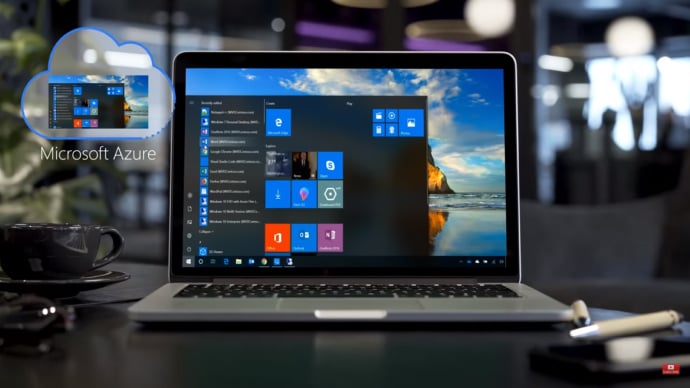



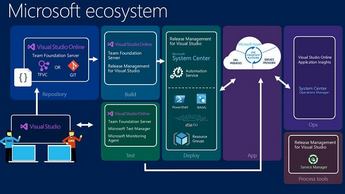






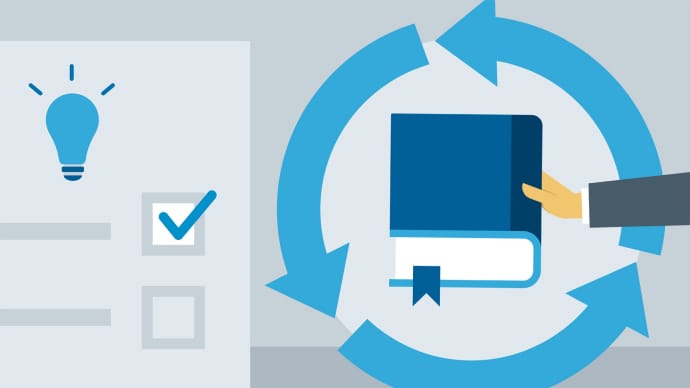



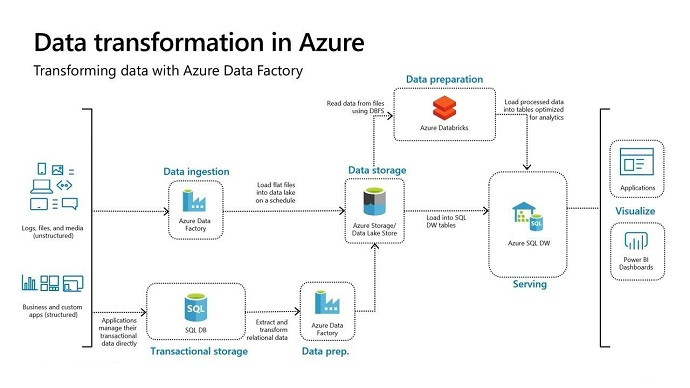









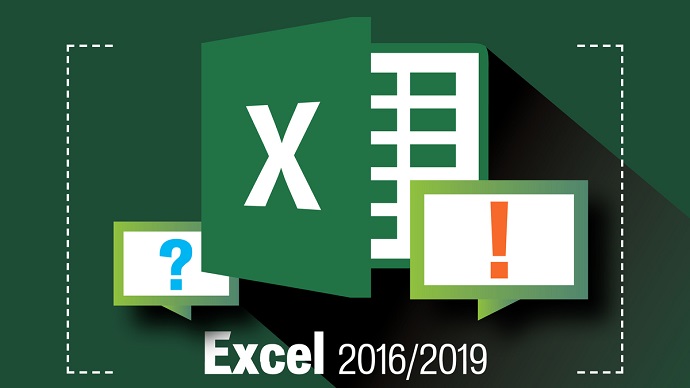





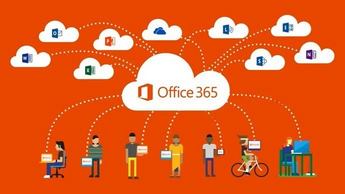
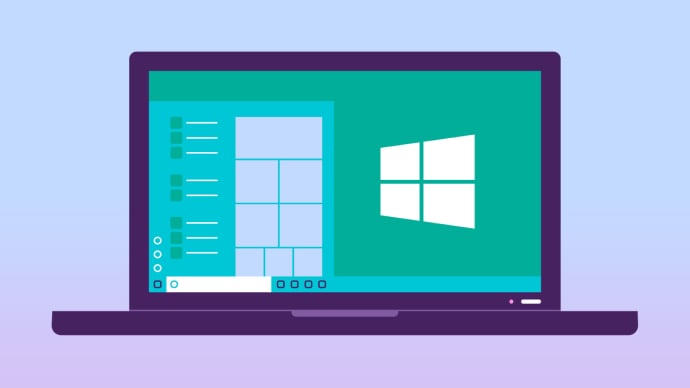









Only Registered Members can View Training Courses
Please fill out your email address below in order to view Training Courses. Registration is Free and Easy, You Simply need to provide an email address.
- Trusted by 1.2M IT Certification Candidates Every Month
- Hundreds Hours of Videos
- Instant download After Registration






